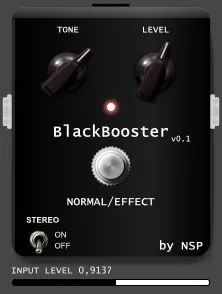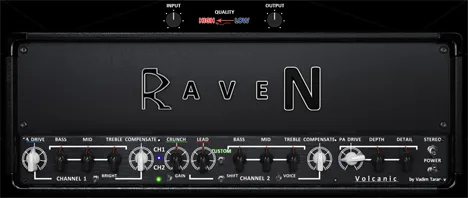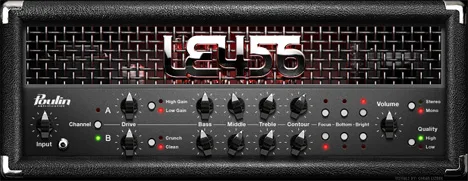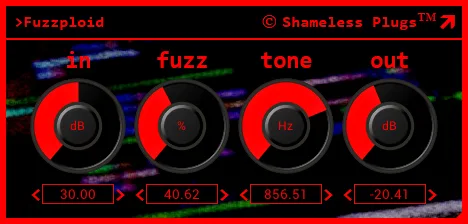NSP BlackBooster: Authentic Amplification for Your Sound
In the world of music production and guitar sound in particular, the correct signal amplification can dramatically change the timbre, add sustain, density, or simply “warm up” the next effect in the chain, whether it’s an amplifier or another pedal. Boosters are an integral part of many musicians’ arsenal, helping to highlight solo parts, saturate riffs, or add tube warmth to clean sound.
Introducing NSP BlackBooster – a plugin that is an emulation of a classic booster pedal, created based on a real electronic circuit. This is not just another digital effect, but an attempt to reproduce the character and behavior of an analog device in the digital space. The developers at NSP aimed to convey the same feeling and dynamics that musicians value in physical pedals.
BlackBooster Features and Capabilities
NSP BlackBooster offers a simple but effective set of functions focused on high-quality amplification and signal shaping. The plugin is designed with modern standards in mind, making it a convenient tool for both home studios and more professional use.
Key Features:
-
Real Circuit-Based Emulation: The plugin is modeled on a specific analog booster circuit. This means that it does not simply apply an amplification algorithm, but imitates the operation of real electronic components, which can potentially give the sound a more organic and “live” character, reproducing the nonlinearities and peculiarities of the behavior of an analog device.
-
64-bit Internal Processing: Using 64-bit internal signal processing ensures high calculation accuracy. This is critically important for preserving sound quality, especially when using multiple plugins in series or with intensive processing. High bit depth helps to avoid digital artifacts, such as quantization noise, and provides a wider dynamic range of processing.
-
Input Level Adjustment: This parameter is extremely important for a booster. It allows you to precisely control the level of the signal that enters the “virtual” circuit of the plugin. By changing the input level, you can adjust the degree of “load” on the circuit, thus affecting the number of harmonics, compression, and overall saturation of the sound. This makes it possible to fine-tune the amplification character from a barely noticeable “warm-up” to a more aggressive “pumping”.
-
Mono/Stereo Processing: The flexibility of processing both mono and stereo signals makes BlackBooster a versatile tool. While boosters are most often associated with mono instruments, such as guitar or bass, the ability to process stereo allows you to apply it to stereo tracks, such as keyboards, synthesizers, or even to entire subgroups of instruments if you want to add a single amplification character or saturation to them.
BlackBooster Applications:
-
Guitar: Classic use. Place BlackBooster before a virtual guitar amplifier to “warm up”, increase sustain for solos, or add it after the amplifier for a final level boost or timbre shaping. The emulation of a real circuit promises interesting interaction with the dynamics of your playing.
-
Bass Guitar: The booster can add density, harmonics, and intelligibility to the bass in the mix, especially when using circuit load.
-
Synthesizers and Keyboards: Applying light amplification can add vintage warmth or slight dirt to digital synthesizer sounds.
-
Drums and Percussion: Use on individual elements (e.g., snare or kick drum) or on a subgroup can add “punch”, saturation, and help the sounds cut through the mix.
-
Vocals: Non-standard use, but slight amplification or saturation from the booster can add presence and warmth to the vocals.
Due to its simplicity and focus on high-quality emulation, NSP BlackBooster is an interesting option for those looking for characteristic analog amplification in the VST plugin format. Its 64-bit processing and flexibility of use make it a worthy addition to the effects library for both guitarists and producers experimenting with sound.
Technical Details
The NSP BlackBooster plugin is available in VST formats for Windows operating systems (both 32-bit and 64-bit versions). This ensures compatibility with most popular DAWs on this platform.



